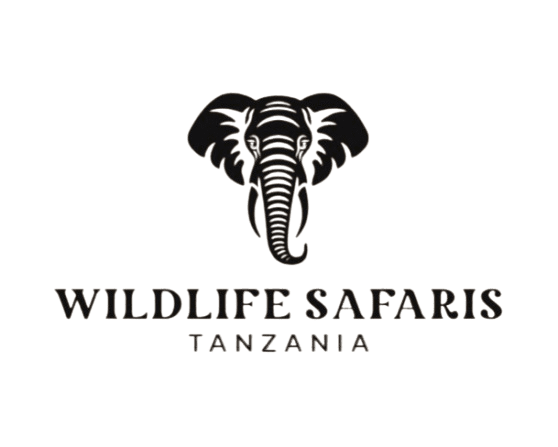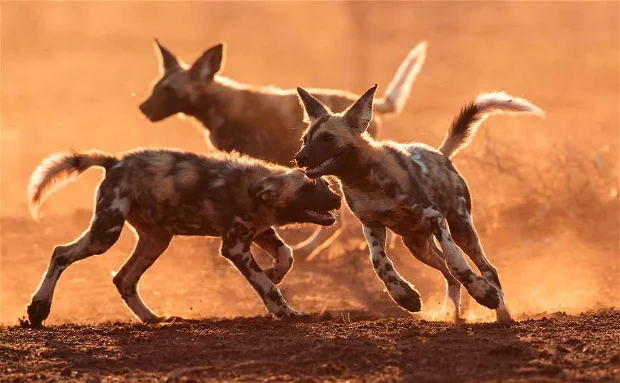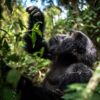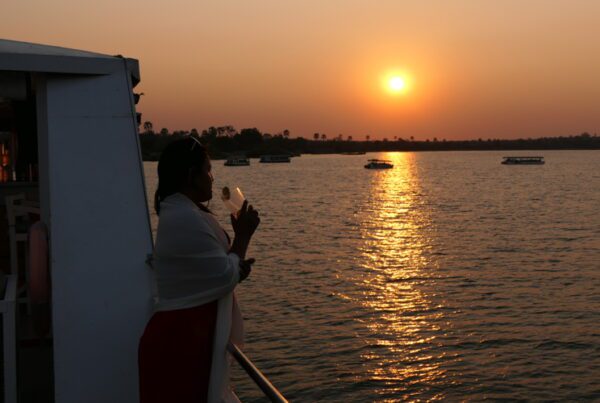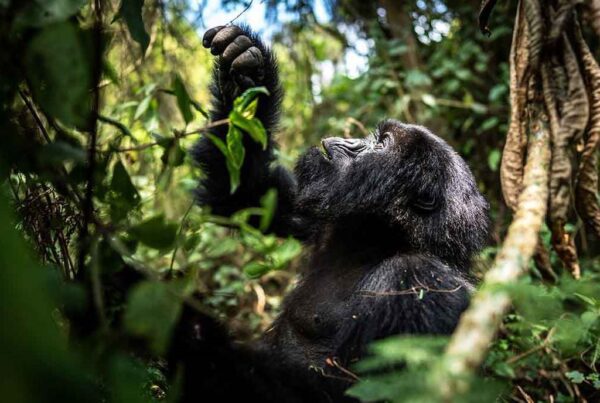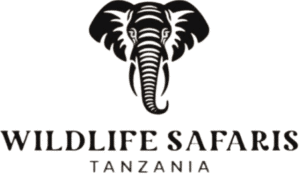Wild Dog Safaris in Tanzania
For many, ticking off the Big Five is a crucial aspect when planning their safari. Of course, these big, ferocious animals are on the bucket list of many travelers, from first-timers to seasoned visitors. But what’s next after you’ve seen them several times? Go back home? No, not very soon. There are still other obscure animals worth a safari drive, and one of them is the African wild dog.
You don’t need binoculars to identify these creatures. Their mottled coat is enough to give you the identity of what type of carnivore you just saw. Always staying in packs, these cute canids never settle for less. This time you see them playing, the next minute they’re chasing an impala. In short, they cover over 50 km per day. That means they require more space (wilderness), and it’s the reason they don’t stay in small protected areas, especially close to human settlements.
Facts about African wild dogs.
These elusive dogs have many names, including African hunting dog, African painted dog, or painted wolf. Whatever the name you choose to address them with, here are interesting facts about these rare, restless canids.
- No predator is more successful than a wild dog.
What drives their 80% hunting success is not size or strength, but their unique techniques. First, they maintain their chase at a relatively constant speed (around 70 km per hour). And during this chase, they bite the prey in the legs, belly, and anus, hence weakening it. Second, their constant co-operation and teamwork during the hunt is more successful compared to lions’ or leopards’ solo hunting. And lastly, they prefer impala, greater kudu, Thomson’s gazelle, and blue wildebeest, which are their easy targets instead of small antelopes.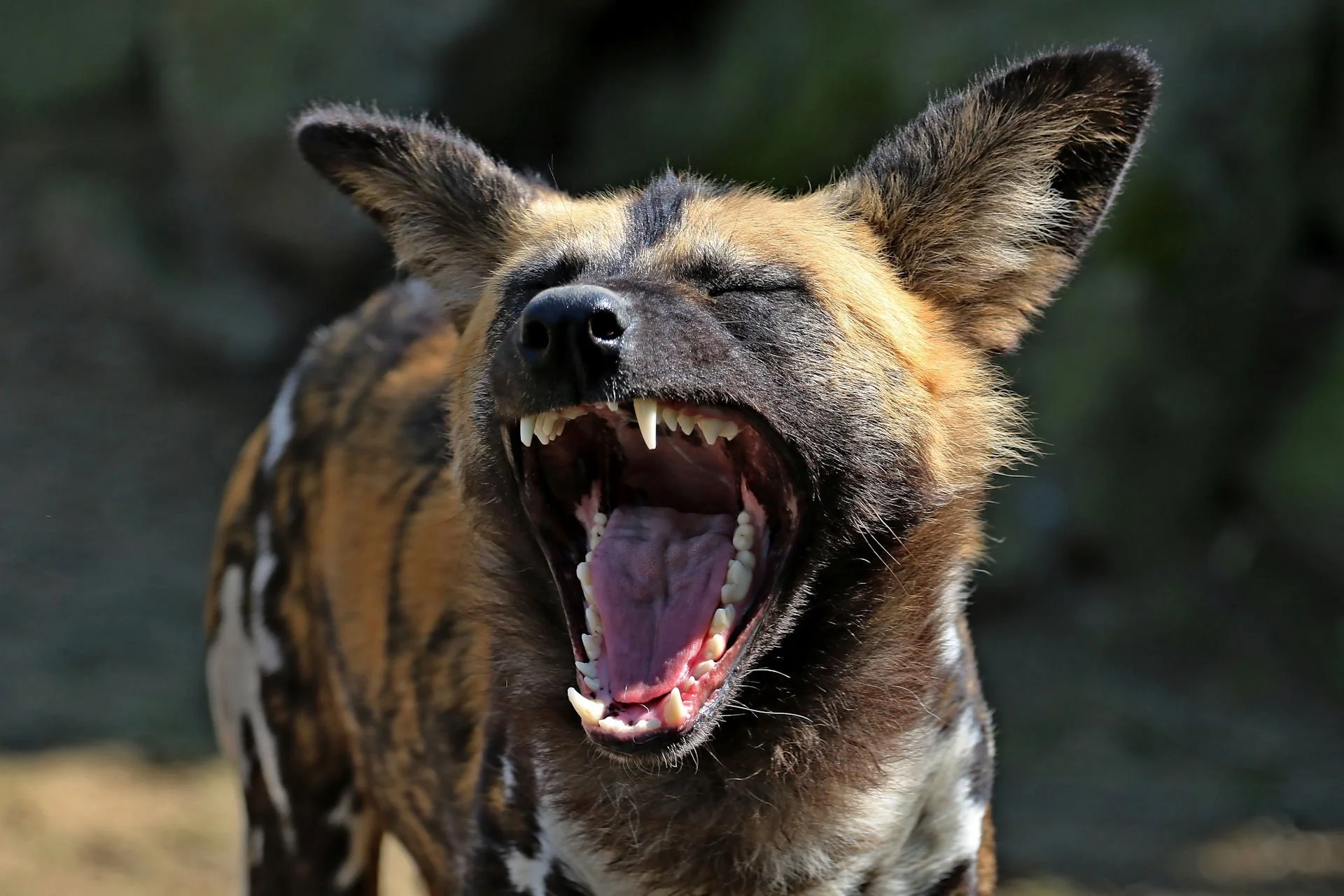
- Family (pack) is everything.
Wild dogs live in closely related packs. In most encounters, these canids form families of between 2 and 20 individuals, usually bound by blood. And like how families matter to humans, for these dogs, the pack is everything. They play together, hunt together, protect each other, and even mourn lost siblings. The pack is usually under the control of an alpha breeding pair (male and female). This alpha pair, particularly the female, decides where they should build their den. Unlike in leopards, where the female takes care of the cubs, the entire pack takes care of the pups.
- They are classified as endangered by the IUCN.
African painted dogs are endangered. For several years, wild dogs have suffered from habitat fragmentation, human-wildlife conflict, and diseases. These challenges have caused a decline in their numbers in Tanzania. Recent estimates put their population at around 2,500. There are several reasons for this. As humans encroach on wildlife areas, these dogs are considered a threat to their livestock. As a result, farmers often hunt them. Additionally, their restless nature forces them to wander long distances. Therefore, habitat fragmentation reduces their natural habitats, forcing them to go to pristine locations like Nyerere National Park.
- Wild dogs are restless.
Like we said, the pack never settles in the same location for hours. They range from one place to another except when they have little ones to take care of. Even with pups, the pack doesn’t stay for long: it moves the den when the pups reach eight weeks. During this time, they are ready to move and hunt, hence adapting to the rhythms of the wilderness. And due to this restless behavior, it’s usually harder to spot one wild dog than it is to see a black rhino. Why is this? Because rhinos are not nomadic – they stay in their favorite habitats for so long. But wild dogs? They prefer plains, woodlands, and forests, but we cannot guarantee you will spot them in the same location for more than two days (except if they have pups).
Best places to see wild dogs in Tanzania.
So, is Tanzania the best safari country to see African wild dogs? Yes, absolutely, you’re in the best chance to spot these elusive dogs in their vast wilderness. Here are our favorite places to see these canids.
Nyerere National Park.
The Nyerere (previously Selous Game Reserve) is not only the country’s largest park but also a stronghold of these painted wolves. This park remains unexplored as a large volume of visitors visit its sister parks in the North. As a result, these dogs find peace in their unique habitats, ranging from grasslands and woodlands to rivers and seasonal lakes. Guests can enjoy rewarding boat cruises along the Rufiji River, night safaris, and fly camping. Our favorite places to stay include Beho Beho, Sand Rivers, and Roho ya Selous.
Serengeti National Park.
Wild dogs are a rare sighting in most parts of the Serengeti. As we mentioned, these creatures love peace. So, it may be a bit difficult to spot one in frequented areas like the central Serengeti. However, chances are higher in the remote south (near Serian’s Camp), especially from December to March when there’s abundant young prey (due to the calving season). You can also encounter wild dogs in the Loliondo Game Controlled Area, north east of the Serengeti. Klein’s Camp is the best camp here.
Ruaha National Park.
There’s an incredible population of wild dogs in Ruaha National Park. Add a few numbers of visitors who reach this remote park and bucket-list adventures, such as boat cruises, fly camping, bush walks, and night safaris. The large elephant herds and giant baobabs are also worth watching. Camps to stay include Jabali Ridge, Usangu Camp, and Kigelia Ruaha.
Other places worth mentioning include Katavi National Park in the remote west, Ngorongoro Conservation Area, and Mkomazi National Park. Plus, we are here to help you. Call our experts to start planning.
